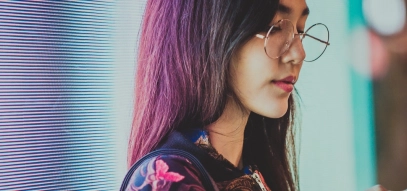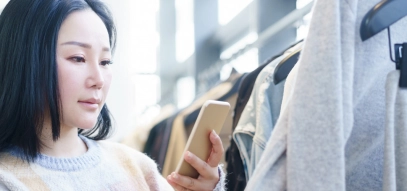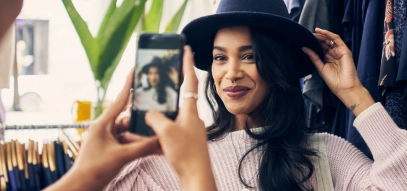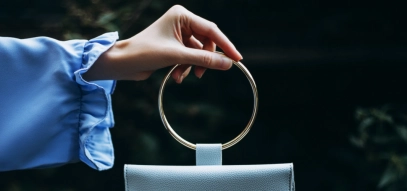The luxury sector is increasingly judged by new standards as customers expect high quality experiences and services alongside product excellence, according to Mazars’ recent report, ‘Conscious, collaborative and connected,’ In response, luxury brands are forging partnerships that help enhance customer experiences, trace and certify the authenticity of products and guide brands on how to produce more sustainably.
Partnerships to reach new audiences
Exclusivity has always been the bedrock of the luxury experience, but in an age when digital rules commercial and personal interactions, brands can find it difficult to maintain control over how their products are discovered, marketed and purchased.
Covid-19 offers a stark example of the need for change: under normal circumstances luxury brands sell a limited number of products online, reserving their main retail operations and VIP customer experiences for traditional bricks and mortar settings. However, lockdowns and social distancing have meant brands faced falling revenues if they did not transition to sophisticated, comprehensive online offerings.
Brands have begun gravitating towards not just selling more on their own websites, but also on other platforms. Net-a-Porter founder Natalie Massenet, in the 2010s, was able to convince luxury labels to appear on the site by offering luxury presentations of the brands and their products, including a new digital format via glossy magazine Porter. Brands were also sold on Net-a-Porter’s commitment to replicating some level of exclusivity – including VIC-level services such as personal shopping and support available 24/7, 365 days a year at the click of a button.
While the digital trend is not new, online collaborations have offered new spaces for customers to experience luxury despite lockdowns. In 2020, Valentino designer Pierpaolo Piccioli received praise for his digital autumn/winter collection, to which he responded, “Digital is not really my world, but it can be a new tool as long as the human is at the centre.”
The technological transformation in luxury fashion is changing more than how brands interact with their customers: it is shaping new and enhanced business models all while enabling brands to stay true to their heritage.
Partnerships to guarantee authenticity
Partnerships are also helping with the industry’s long-waged battle against counterfeiting. Fake luxury merchandise is estimated to account for 60 to 70% of the €3.8 trillion reported in annual counterfeit trade flows. Brands are litigating, tightening their supply chains and pressuring governments for more forceful implementation of existing laws to boost authenticity. One solution is the Arianee project consortium, which has developed a protocol for an open source, blockchain based technology that generates digital passports for products.
Other examples of brands working together in the name of authenticity include De Beers Group, the global diamond specialist, partnering with Etherum to create Tracr, which uses digital technologies to trace and authenticate products. The project has welcomed the participation of other diamond suppliers, including the world’s largest diamond mining company, Alrosa, and retailers like Signet Jewellers
Partnerships to meet growing sustainability demands
Consumers are increasingly conscious of the environmental impact of their purchases and are demanding brands offer more sustainable solutions. The global second-hand goods market alone is worth more than €30bn.
Gen Z, the industry’s youngest cohort, is leading the change by voicing demands for strong ethical brand behaviour and making it clear they are ready to boycott brands they do not consider ethical and sustainable. In 2020 Gucci responded by partnering with second hand retailer, the RealReal, to create Gucci portal, where the brand can sell-on products used in campaigns and photoshoots that may otherwise have never made it to retail.
This has led to another series of unlikely partnerships, including The Fashion Pact, a global coalition of companies within the industry that are committed to a series of environmental goals. It promotes brand-to-brand exchanges to enable the circularity that customers want, such as the use of more sustainable materials. Through the pact, Adidas, Stella McCartney, Lululemon and Kering joined forces to invest in an emerging material known as Mylo, which is made from mycelium, a mushroom that looks and feels like animal leather. In creating a joint supply chain for vegan leather, these companies were able to manufacture the product at a commercially viable scale.
Are partnerships the future of fashion?
The culture of the fashion industry is changing rapidly: major brands and companies that consider themselves competitors are starting to realise the power of partnership to meet customer demands for greater experiences, services and sustainability.
Through partnerships, companies are able to go further and faster to accomplish common goals. In doing so they stand to not only surpass modern customer demands but evolve culturally and organisationally to ensure they are on trend for generations to come.
To find out more about luxury partnerships and how brands are adapting their business models to serve customers more effectively, download ‘Conscious, collaborative, connected’ below.








